Black Elk, Heȟáka Sápa, (December 1863 – August 19, 1950),
was a wičháša wakȟáŋ (medicine man and holy man) of the
Oglala Lakota (Sioux). He was Heyoka and a second cousin of
Crazy Horse.
Black Elk, wičháša wakȟáŋ, of the Oglala Lakota - A Life In Photos
6/12/15
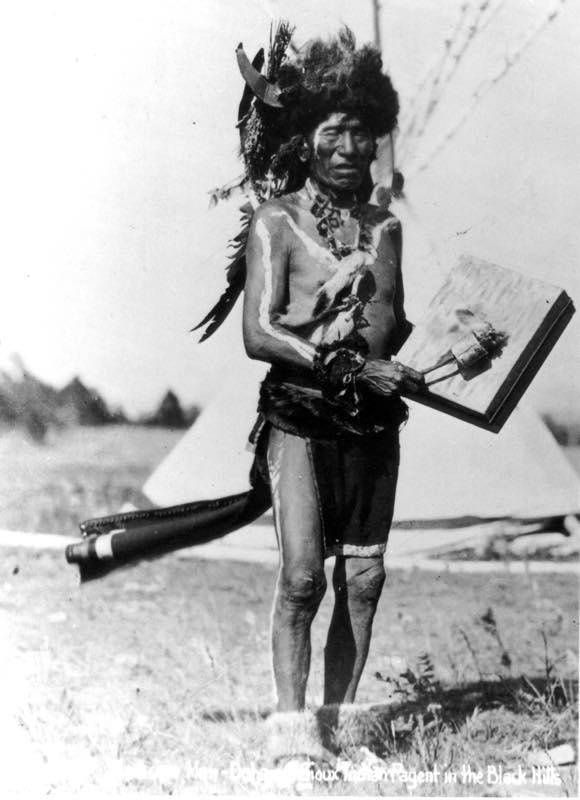
"The only thing I really believe is the pipe religion."
- Black Elk, near death, to his daughter Lucy Looks
Twice. Pictured here is Black Elk in South Dakota, circa
1900. South Dakota Historical Society via SDPB (South
Dakota Public Broadcasting)
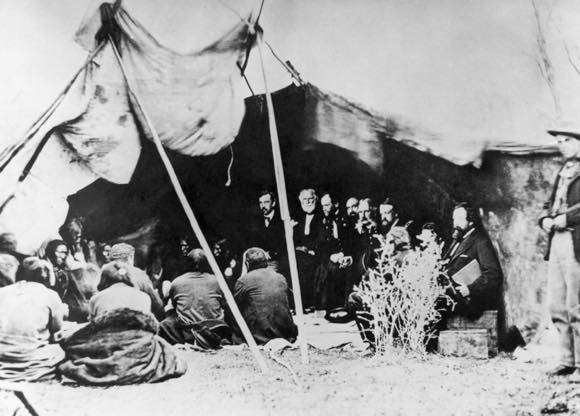
Black Elk was born in Dec. 1863, into a world in strife,
along the Little Powder River (Wyoming), which would be
invaded by European settlers in the next few years. The
Europeans had to compete with the area’s tribes for
scarce resources, leading to Red Cloud's War 1866-1868,
between the U.S. Army and several Indian Tribes.
Pictured here is the signing of The Treaty of Fort
Laramie between William T. Sherman and the Sioux, in a
tent, on April 29, 1868. The Treaty of Fort Laramie
(also called the Sioux Treaty of 1868) was an agreement
between the United States and the Oglala, Miniconjou,
and Brulé bands of Lakota people, Yanktonai Dakota, and
Arapaho Nation signed at Fort Laramie in the Wyoming
Territory, guaranteeing to the Lakota ownership of the
Black Hills, and further land and hunting rights in
South Dakota, Wyoming, and Montana. The Powder River
Country was to be henceforth closed to all whites. The
treaty ended Red Cloud's War. However the discovery of
gold in the Black Hills in the coming years lead to
violations of the Treaty by prospecting settlers,
culminating in the The Great Sioux War of 1876-77.
Alexander Gardner photo, 1868. (Bettmann/Corbis/AP
Images).
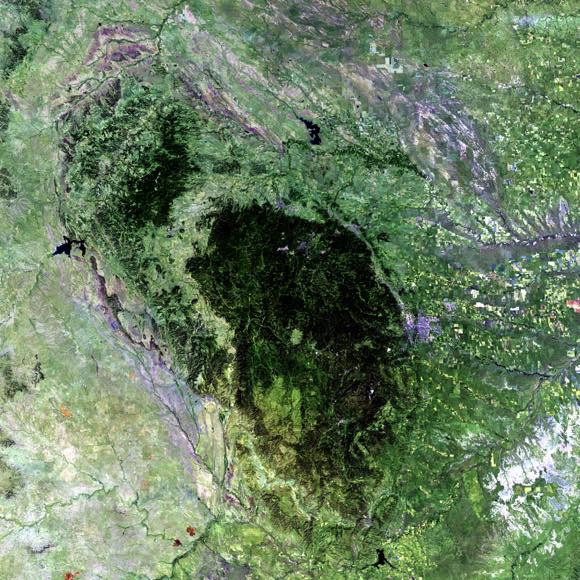
Black Elk grew up in The Black Hills, S.D. (Ȟe Sápa in
Lakota), here seen in an EROS (Earth Resources
Observation Satellite) satellite image on 08-11-2010.
The Black Hills are considered by the Lakota people to
be the Center and heart of everything that is. It is
part of the Lakota people’s creation story. It is a
sacred place. Lt. Col. George Custer’s Black Hills
Expedition of 1874 violated the Fort Laramie Treaty of
1868, and set off a gold rush in the area after Custer
announced her found gold in French Creek, S.D.
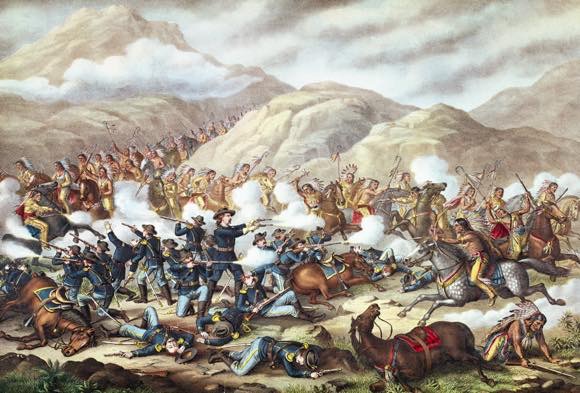
13 year-old Black Elk witnessed The Battle of the Greasy
Grass (the Lakota's preferred term), aka. The Battle of
Little Bighorn on June 25–26, 1876. (Bettmann/Corbis/AP
Images)
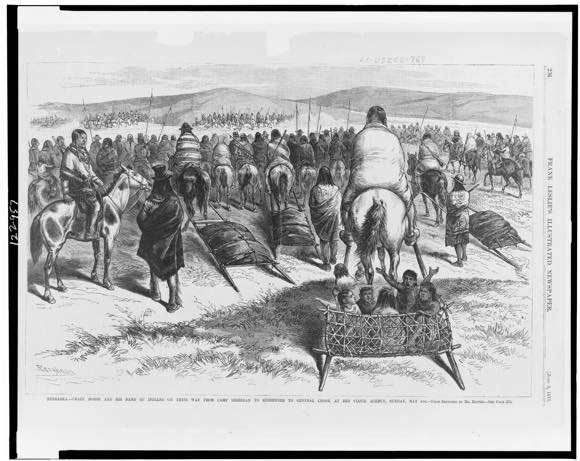
Black Elk was part of his cousin Crazy Horse’s
contingent that escaped capture in the aftermath of The
Great Sioux War 1876-1877, but formally surrendered
after the difficult winter of 1877. Pictured here is a
drawing of Crazy Horse and his band of Indians on their
way from Camp Sheridan to surrender to General Crook at
Red Cloud Agency, Nebraska, Sunday, May 6, 1877. Via
Library of Congress
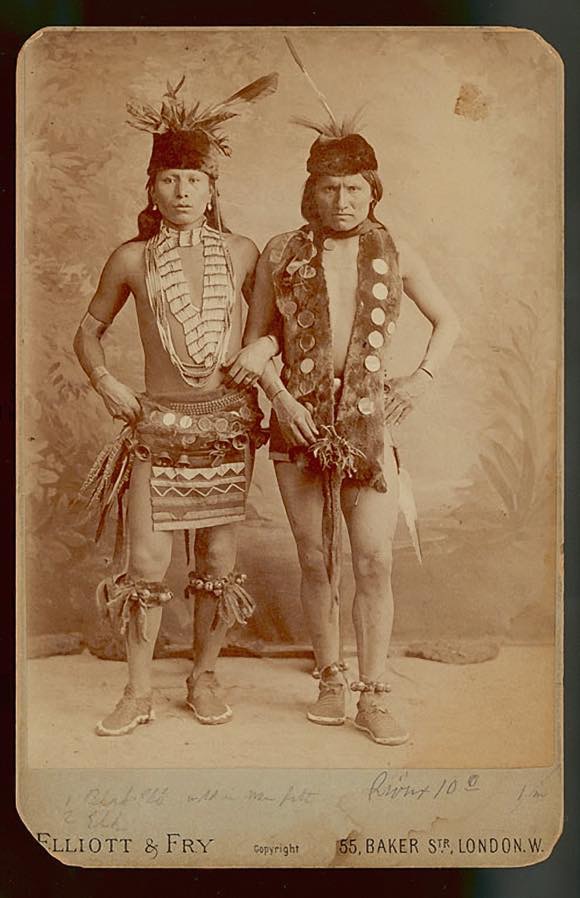
Black Elk and Elk of the Oglala Lakota as grass dancers
touring with the Buffalo Bill Wild West Show, London,
England, 1887. The men are wearing sheep and sleigh
bells; otter fur waist and neck pieces; pheasant feather
bustles at the waist; dentalium shell necklaces; and
bone hairpipes with colored glass beads. Photograph
collected on Pine Ridge Reservation in 1891 by James
Mooney. Courtesy National Anthropological Archives,
Smithsonian Institution
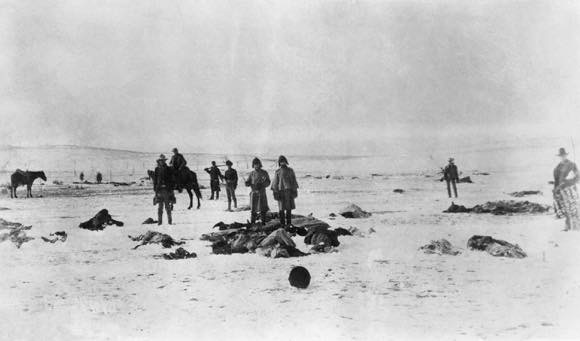
At The Battle Of Wounded Knee on Dec. 29th,1890, Black
Elk on horseback charged soldiers and helped to rescue
some of the wounded. He arrived after Spotted Elk's (Big
Foot's) band of people had been shot and he was grazed
by a bullet to his hip. Pictured here is the terrible
aftermath of the massacre. AP Images.
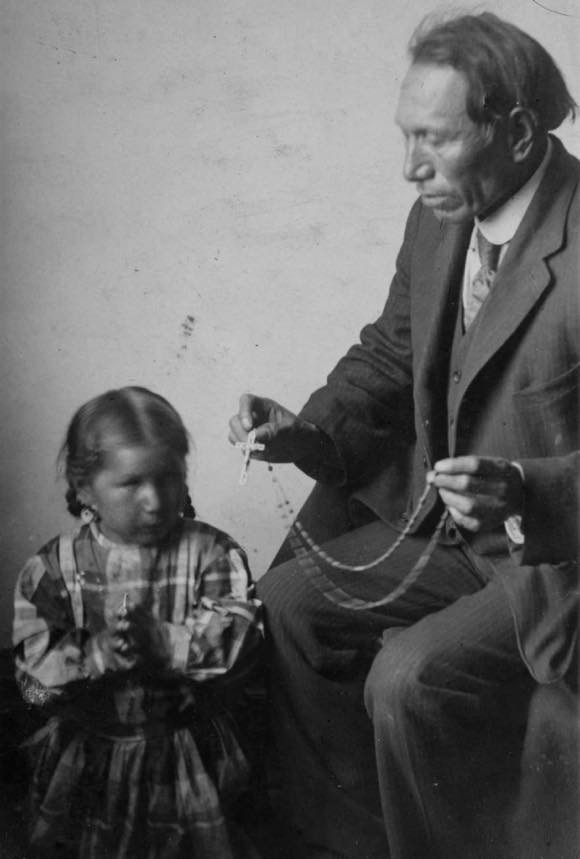
Black Elk married Katie War Bonnet in 1892 on the Pine
Ridge Reservation, and they had three children. Katie
converted to Catholicism, and after her death in 1903,
Black Elk converted to Catholicism in 1904 and took the
first name Nicholas. Pictured here is Nicholas Black Elk
teaching daughter Lucy Looks Twice (born Black Elk) how
to pray the rosary. Published In the land of the Wigwam:
Missionary Notes from the Pine Ridge Mission by Henry
Ignatius Westropp, undated (ca. 1910), p. 13. Marquette
University E-Archives.
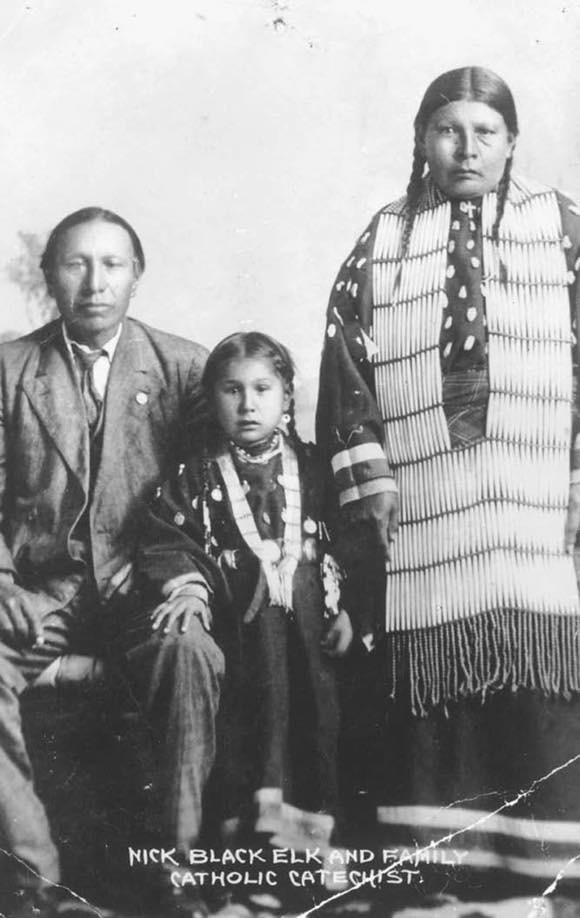
Nick Black Elk, daughter Lucy Black Elk and wife Anna
Brings White, photographed in their home in Manderson,
South Dakota, ca 1910. Black Elk wears a suit, his wife
wears a long dress decorated with elk's teeth and a hair
pipe necklace. Wikipedia
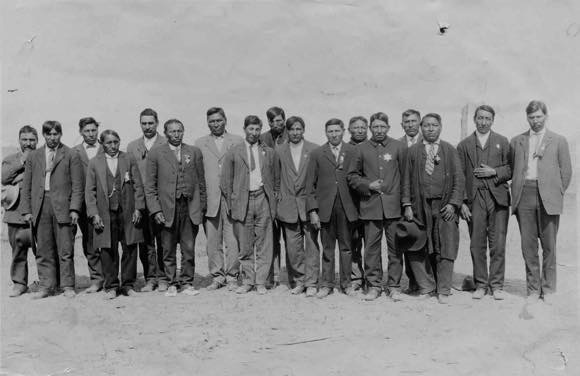
Nick Black Elk 6th from left (wearing moccasins), at The
Cathechists at Catholic Sioux Congress, 1911; published
in The Indian Sentinel, 1(1916). Marquette University
E-Archives
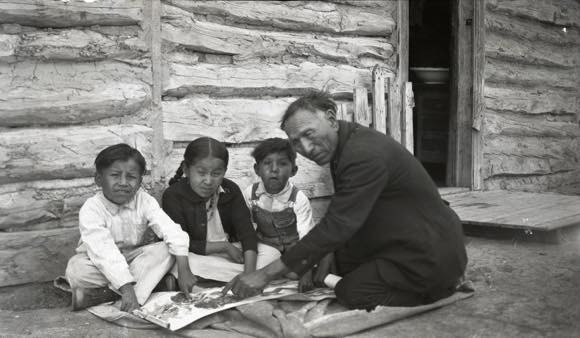
Black Elk, Age ca. 62-63, 1927 or 1928. He taught the
faith with the “Two Roads” picture map with the Good Red
Road (red = Jesus’ blood) and the Black Road of
Difficulties, at Broken Nose cabin, Pine Ridge
Reservation. Marquette University E-Archives

1930-31 Black Elk with his drum and Standing Bear with
Black Elk's pipe; in the foreground a Chief Joseph
blanket. Photograph taken by John G. Neihardt during the
interviews for the book Black Elk Speaks, published in
1932. John G. Neidhart Trust
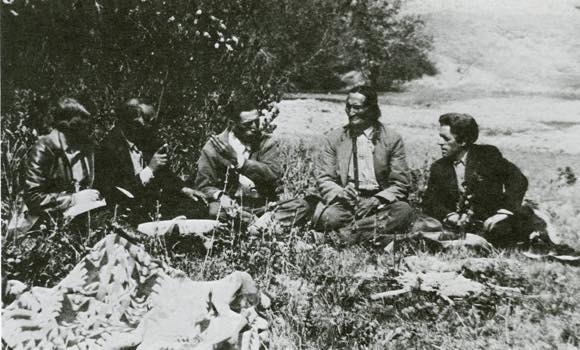
1930-31 Enid Neihardt, Nick Black Elk, his son Ben Black
Elk, Standing Bear, and John G. Neihardt, during the
interviews for Black Elk Speaks, published in 1932. John
G. Neihardt Trust
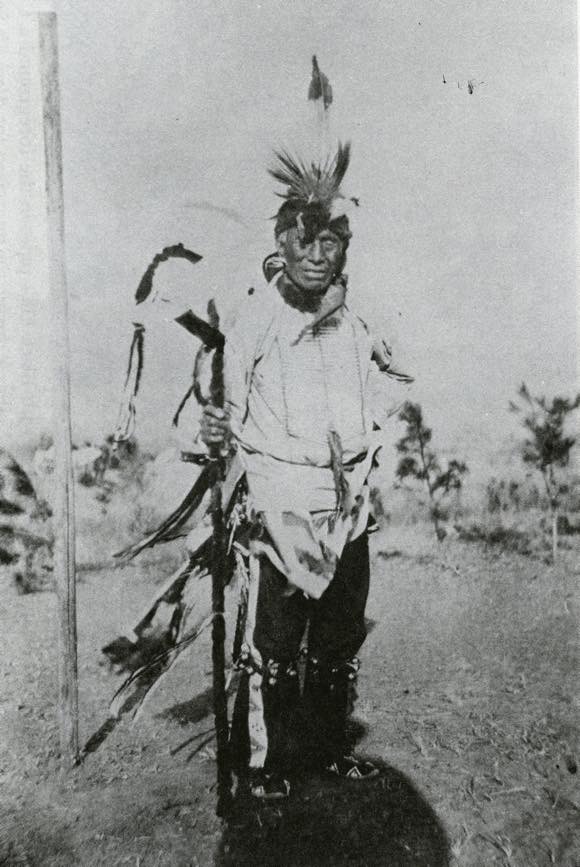
Black Elk at a feast given by John G. Neihardt in May
1931, during the interviews for Black Elk Speaks,
published in 1932. John G. Neihardt Trust
![Black Elk returns to pray on Harney Peak, 1931, the site of his “Great Vision,” when he was nine years old. In his vision he saw “the Thunder Beings and taken to the Grandfathers, who represented the six sacred directions of west, east, north, south, above, and below. They took Black Elk to theater of the earth, the central mountain of the world, the axis of the six sacred directions, the point where stillness and movement are together.” [Wikipedia]. Harney Peak, called Hinhan Kaga by the Lakota Sioux, is the highest natural point in South Dakota and the Black Hills. Neidhart.com](1931_black_elk_prays.jpg)
Black Elk returns to pray on Harney Peak, 1931, the site
of his “Great Vision,” when he was nine years old. In
his vision he saw “the Thunder Beings and taken to the
Grandfathers, who represented the six sacred directions
of west, east, north, south, above, and below. They took
Black Elk to theater of the earth, the central mountain
of the world, the axis of the six sacred directions, the
point where stillness and movement are together.”
[Wikipedia]. Harney Peak, called Hinhan Kaga by the
Lakota Sioux, is the highest natural point in South
Dakota and the Black Hills. Neidhart.com
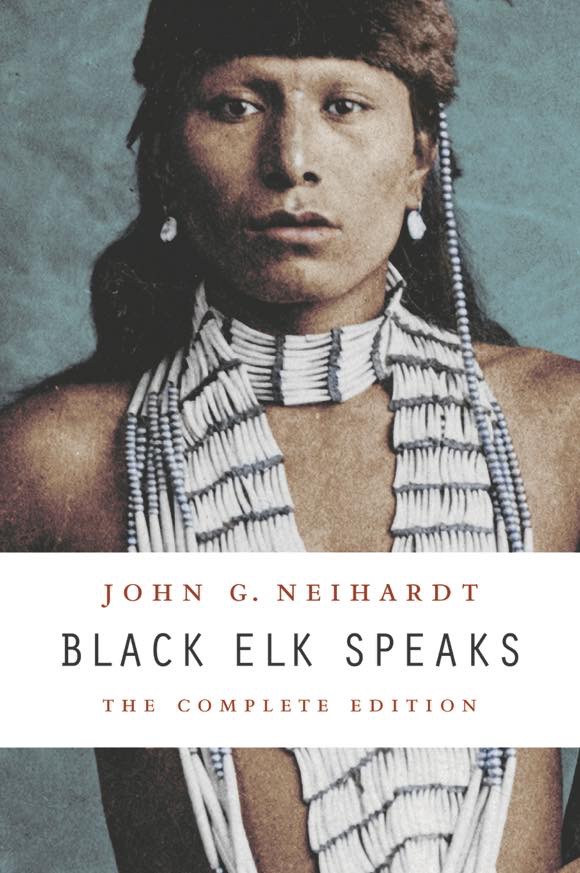
A new edition of "Black Elk Speaks," the 1932 classic by
John G. Neihardt, was published in a “Complete Edition”
in 2014 by the University of Nebraska Press. In it Black
Elk relates his life and visions.
![1937 Nicholas Black Elk in chief's costume. “Beginning in 1934, Black Elk returned to the work that he had done earlier in life with Buffalo Bill – organizing an Indian show in the Black Hills. Unlike the Wild West shows which were used to glorify Indian warfare, Black Elk's show was used primarily to teach tourists about Lakota culture and traditional sacred rituals – including the Sun Dance.” [Wikipedia]](1937_in_chiefs_costume.jpg)
1937 Nicholas Black Elk in chief's costume. “Beginning
in 1934, Black Elk returned to the work that he had done
earlier in life with Buffalo Bill – organizing an Indian
show in the Black Hills. Unlike the Wild West shows
which were used to glorify Indian warfare, Black Elk's
show was used primarily to teach tourists about Lakota
culture and traditional sacred rituals – including the
Sun Dance.” [Wikipedia]
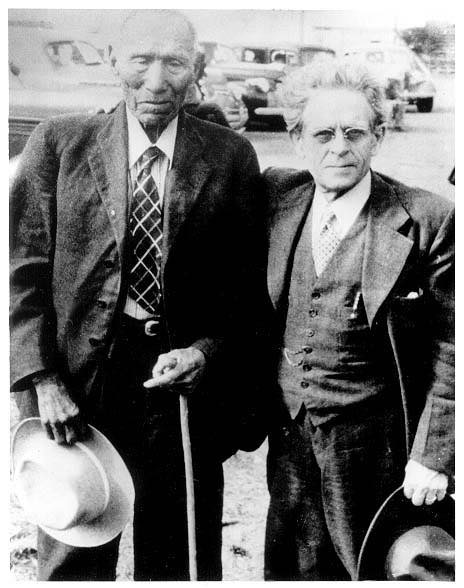
Nicholas Black Elk and John G. Neihardt in 1945. (Black
Elk-Neihardt Park)

Nicholas Black Elk in 1948
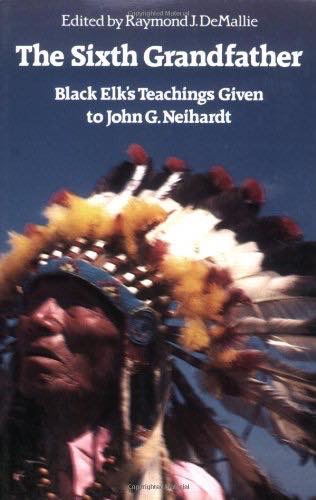
1985 "The Sixth Grandfather: Black Elk's Teachings Given
to John G. Neihardt, Edited by Raymond J. DeMallie."
These are Transcripts of Neihardt interviews which
reveal greater details on Black Elk’s life and visions
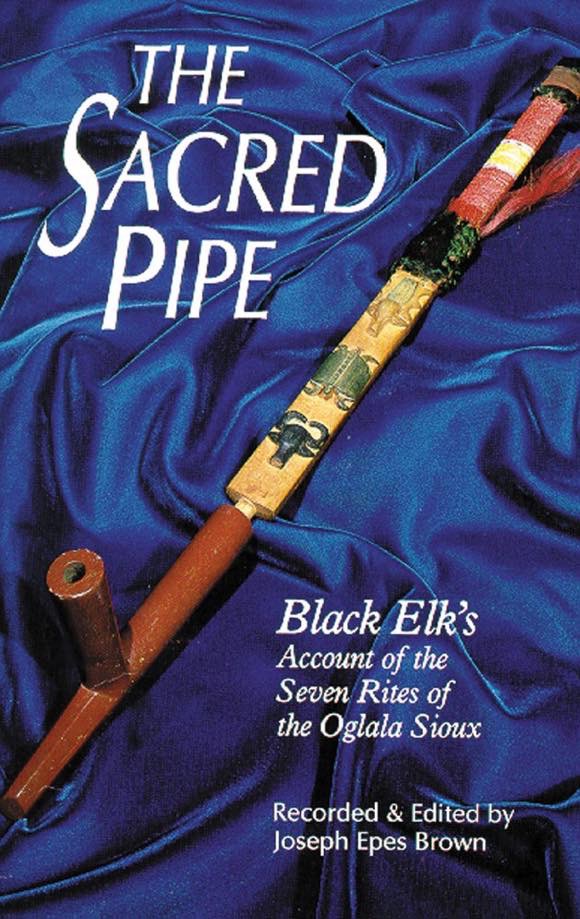
1997 "The Sacred Pipe: Black Elk's Account of the Seven
Rites of the Oglala Sioux. Recorded and Edited by Joseph
Epes Brown." Still more details on Black Elk's life.
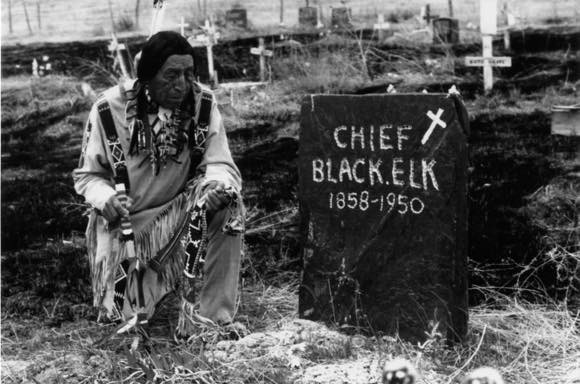
Ben Black Elk with pipe at grave of his father, Nicholas
Black Elk. Red Cloud Indian School publicity image,
1970-1971. Marquette University E-Archives.
Read more at http://indiancountrytodaymedianetwork.com/2015/06/12/black-elk-wichasa-wakhang-oglala-lakota-life-photos-160706
